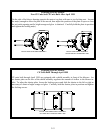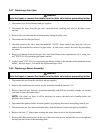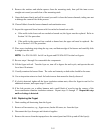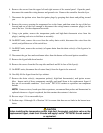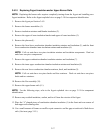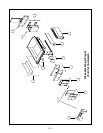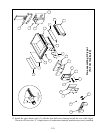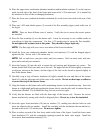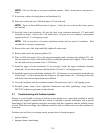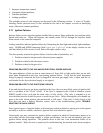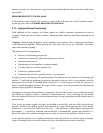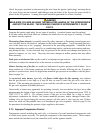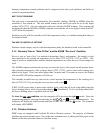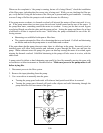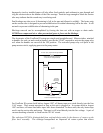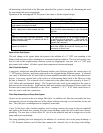3-21
NOTE: Full vat units have a two-piece insulation retainer. Dual vat units have a one-piece re-
tainer.
27. If necessary, replace the sight-glasses and insulation (14).
28. Place one washer and one 1.888-inch spacer (15) on each stud.
NOTE: There are three different sizes of spacers. Verify the size to ensure the correct spacers
are installed.
29. Insert the front lower insulation (16) into the front lower insulation retainer(s) (17) and install
assembly on frypot. Secure with ¼-20 washer-nuts. If frypot uses two retainers, connect them
together with two ¼” self-tapping screws.
NOTE: Full vat units have a two-piece insulation retainer and two pieces of insulation. Dual
vat units have one-piece components.
30. Return to the rear of the frypot and fully tighten all washer-nuts.
31. Remove and replace the plenum gaskets (18).
32. Place a 0.938-inch spacer (19) on the plenum-mounting studs, and mount the plenum (20). En-
sure the gaskets are clear of the burner tubes by pulling the plenum back slightly. Place a washer
on each stud and secure plenum with ¼-20 locknuts.
33. Install the upper oil-zone insulation (21) by pressing it under the upper combustion chamber
metalwork. Secure the insulation with the bracket (22) and ¼” self-tapping screws.
34. Install the upper burner rail blanket insulation (23). Position any excess insulation toward the top
of the frypot. Avoid overhang past the bottom of the upper burner rail. Overhang in this area
will make future burner replacement more difficult.
35. Cover the insulation with the insulation retainer (24), and secure with ¼” self-tapping screws.
36. Reinstall probes, drain valves, high-limit thermostats and other pipefittings using Loctite
®
PST56765 sealant or equivalent on their threads.
3.7 Troubleshooting and Problem Isolation
Because it is not feasible to attempt to include in this manual every conceivable problem or trouble
condition that might be encountered, this section is intended to provide technicians with a general
knowledge of the broad problem categories associated with this equipment, and the probable causes
of each. With this knowledge, the technician should be able to isolate and correct any problem en-
countered.
Problems you are likely to encounter can be grouped into six broad categories:
1. Ignition failures
2. Improper burner functioning



